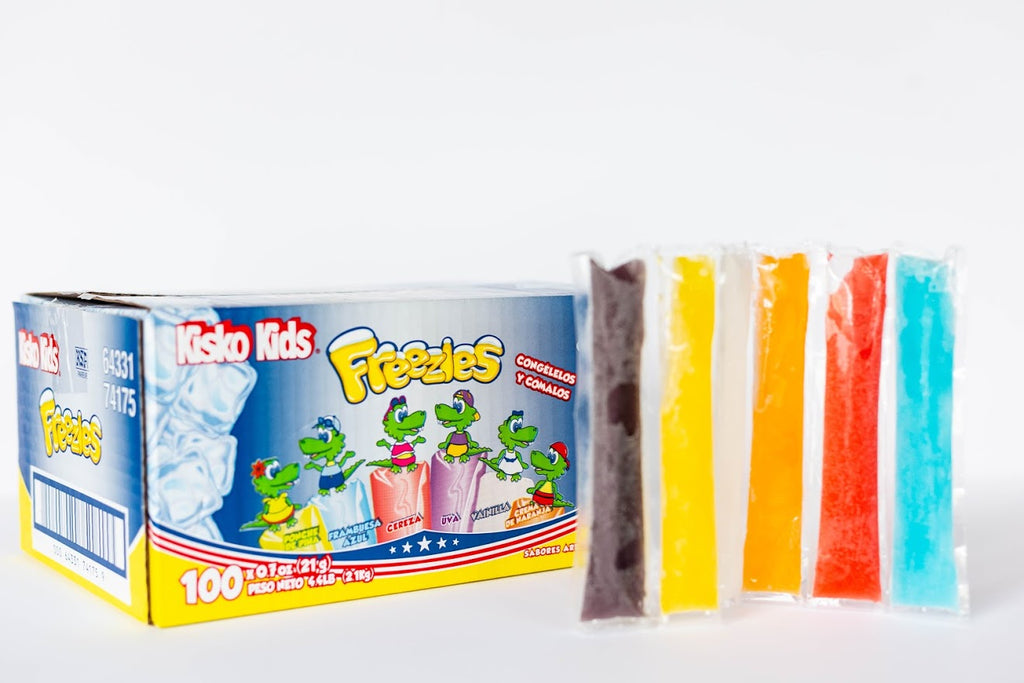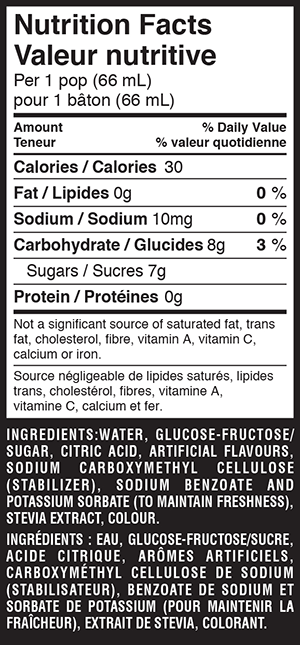Fun Facts With Freezies: What Do Freezies And Science Have In Common?
Are you looking for a fun-yet-educational way to teach kids about science? There’s no better way to get started than with Freezies!
At Kisko, we’ve got flavour down to a sweet science, and we love getting scholarly scientific, too! That’s why we started our Scientists in the School partnership – to give kids new ways to learn science minus the boredom.
We encourage you to try out a few of our creative (and tasty) experiments at school or home. Read on to find out how you can teach kids about science with Freezies!
Try These Three Cool Science Experiments
Science is important because it teaches children about the world around them. But sometimes, kids can find conventional lessons boring or difficult to understand. If you want to pique their interest, you need to make learning fun and interactive.
Here are a few delicious ways to tickle your children’s curiosity!
Melting Freezie Guessing Game
First up is a cool experiment that teaches kids a thing or two about physics! This experiment helps children understand the different states of matter, by observing the physical transformation of a solid object into its liquid state.
All you need are:
- Plastic plates, containers, or placemats
- Metal plates, coasters, or trays
- One Freezie per kid
Everyone should have at least one pair of plastic and metal objects to place their Freezies on. Then, ask them to touch each material and guess which one will melt the Freezies faster.
Many kids will choose plastic because it’s the warmer option. Plus, metal is cold to the touch! It couldn’t possibly melt Freezies faster, right?
WRONG!
Once the kids place their bets, it’s time for a demonstration. Ask everyone to place one Freezie on their answer, then watch to see what happens. Make sure to put your own Freezie on the metal plate for comparison.
Have them observe how quickly it takes for the Freezies to melt. Surprise, surprise: the plastic keeps the Freezies cool while metal melts it almost instantly!
At this point, it’s time to come in with a super scientific explanation about insulation and conduction. Although the temperatures are the same, metal conducts cold or heat by dispersing it away from the source. In contrast, the plastic insulates whatever it comes in contact with, maintaining the temperature for much longer.
Isn’t that the COOLEST? After the game, everyone can eat their Freezies – or what’s left of them, at least! It’s scientific, fun, and yummy all rolled into one!
Fishing For Salty Freezies
Have you always wanted to teach kids about chemistry? In our next experiment, you’ll help your kids make a few simple chemical observations while ice fishing for Freezies.
To get started, all you need are:
- Salt
- Freezies
- Ice cubes
- Strings
- Glass or plastic bowl
Before you start with this experiment, place a string on the Freezie and try to “lift” it up – impossible right? This will confuse your kids and act as the perfect introduction to your salty magic trick!
Next, fill the bowl with cold water and a handful of Freezies, and sprinkle a bit of salt on top of everything. Lay a few strings on top of the Freezies. Then, wait a few minutes for the string to attach to each Freezie.
For your grand finale, have the kids pull the string – the Freezies should lift up, just like magic.
Explain to your kids that salt causes ice to melt a bit, but the presence of salt also lowers water’s freezing temperature. As a result, the ice sticks to the string as it melts and refreezes within seconds!
Refreezing Freezies On Wire
Want to teach kids about regelation? In case you don’t know what that is, regelation is a phenomenon that causes frozen objects to melt under pressure. Then, when pressure is reduced, it refreezes – like what happens to transmission lines during the winter season.
To try out this simple experiment, you need four things:
- Two pieces of wire
- A glass or a bowl
- A Freezie
- Tape or paper clips
Form two parallel lines with the wires and secure them in place with tape or paper clips. Unwrap the Freezie and place it on top of two wires, then wait for half an hour or until it melts halfway.
When the Freezie reaches the halfway melting point, point out how the melted parts refreeze underneath the wires. Finally, have your kid lift the Freezie. Voila – the Freezie is wrapped around the two pieces of wire. Awesome, right?
Help Kids Kids Learn In New, Fun, And Flavourful Ways With Kisko Freezies
You don’t need a lot of tricks up your sleeve to teach kids science! With a few household items and their favourite Freezies, you can spark their curiosity and encourage them to keep learning while they’re young.
Who knew science could be so fun and flavourful? Stock up on some of our most popular Kisko Freezies today and help children learn the cool way!















